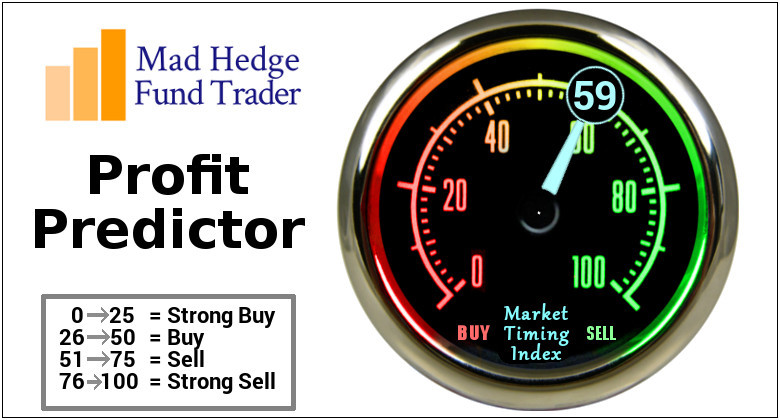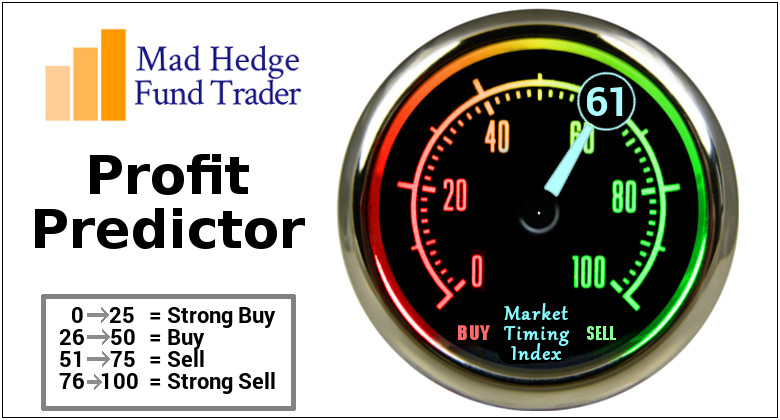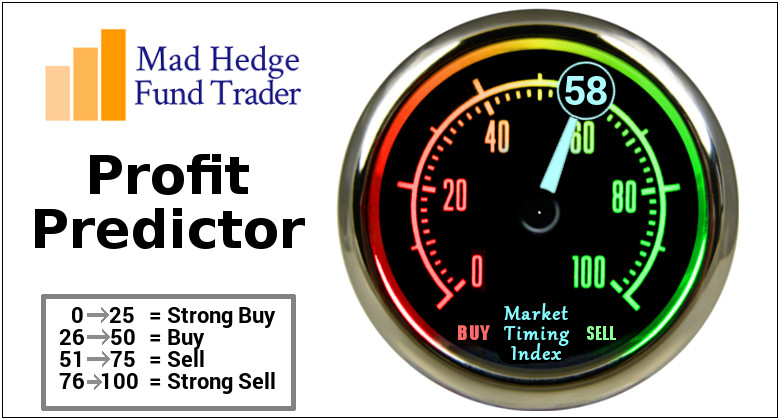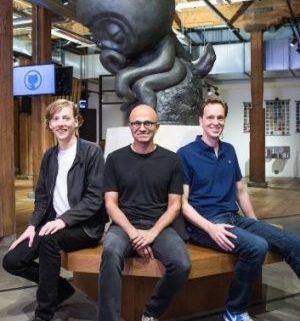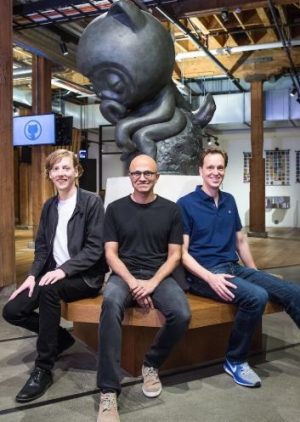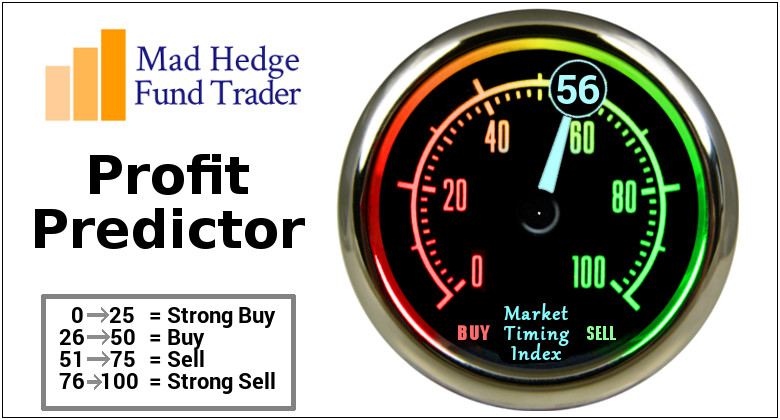There is light at the end of the tunnel.
A glimmer of hope is better than nothing.
Stolen IP was yesterday's story.
The administration's attempts to stick China with the bill is a waste of time.
The stock market is forward-looking and that is what I focus on when writing the Mad Hedge Technology Letter.
American tech companies want to turn over this bitter page of history and construct a fruitful future.
Ironically, it could be no other than American large tech companies that solves this trade misunderstanding by embracing Chinese tech instead of dragging them through the embers of political chaos.
That is what this groundbreaking partnership between Alphabet (GOOGL) and China's second largest e-commerce company JD.com (JD) is telling us.
If American and Chinese tech agree to fuse together through different M&A activity, strategic partnerships, and engineering projects, slapping penalties on your own interests would be without basis.
Albeit gone are the yesteryears of complete ownership on the other's turf, a medium ground could be found to satisfy both parties.
Alphabet's $550 million investment will give it 27 million shares of JD.com Class A shares equating to a 1% stake in JD.com.
JD.com products will now be hawked on Google Shopping, a platform giving users a chance to compare different price points from various sellers.
JD.com's fresh links with Silicon Valley's original powerhouse is timely because its business-to-consumer retail sales have slightly dipped in form from 27% last year to an underwhelming 25% in the first quarter of 2018.
Alibaba (BABA), the Amazon of China, is the 800-pound gorilla in the room and has a stranglehold on this market, carving out a robust 60% of sales from business to consumer retail.
Chinese companies have never worried about foreign companies seizing market share in China because they know the rigid operating environment mixed with "cultural" barriers will lead to a rapid demise.
Chinese firms are channeling their distress toward local competitors that understand the market as well as they do and number in the 100s in any one industry.
This is also a huge bet on the Chinese consumer who has put the world economy on its back creating the lions' share of global growth for the past 10 years.
Do not bet against China and the Chinese consumer.
Alphabet is taking this sentiment to the bank by integrating part of a premium Chinese tech firm into its own top line performance.
This investment would not happen if Alphabet believed the trade war could turn draconian cannibalizing each other's profit engines.
Alphabet has obviously been reading the tea leaves from the Mad Hedge Technology Letter as I identified China's huge competitive advantage in Southeast Asia and the huge potential for Chinese companies that migrate there.
The pivot toward Southeast Asia was the deal clincher for Alphabet and rightly so.
Alphabet has also invested in opening an A.I. (artificial intelligence) lab in Beijing showing its determination to extract a piece of the pie from China and ensuring their brand power is maintained in the Middle Kingdom.
Google search has been shut down on mainland China since 2010. Therefore, Alphabet needs to find alternative ways to benefit from the Chinese consumer and increase its presence.
The writing on the wall was when Baidu (BIDU) came to the fore with its own Chinese version of Google search.
Opportunities on the mainland have been scarce ever since the appearance of Baidu.
Apple (AAPL) has been the premier role model in China successfully juggling the complexities of the Chinese market. A big part of its staying power is offering local Chinese jobs.
Not just a few jobs, but millions.
As of April 2017, an Apple press release stated, "Apple has created and supported 4.8 million jobs in China" which is almost three times more than in America.
Apple deploys much of its supply chain around the mainland and taking down Apple in a trade war would strip millions of Chinese jobs in one fell swoop.
Not only that, Apple has deeply invested in data centers located in China and opened research centers in Shanghai and Suzhou.
Foxconn, a company responsible for assembling iPhones in mainland China, employs 1.2 million alone.
Alphabet would be smart to follow in the same footsteps, effectively, morphing into a hybrid Chinese company employing locals in droves and allowing millions of Chinese to earn their crust of bread through local factories.
Let me be clear: This would not hurt its business back at home.
It is also wrong to say that China is saturating because the 6.8% annual growth rate in China is a firm vote of confidence for Chinese discretionary spenders.
However, instead of competing head to head under the scrutiny of Chinese regulators, it is much more sensical to copy SoftBank's Masayoshi Son's lead when he invested $25 million in Jack Ma's Alibaba in 1999.
SoftBank's 1999 investment is now valued at more than $30 billion as of the current share price today.
Yahoo later joined the party in 2005, investing $1 billion into Alibaba and that stake is worth many times over.
Instead of fighting through cultural norms and fighting against the throes of an exotic business environment, paying for a stake and leaving its nose out of it has shown to be demonstrably effective.
Partnerships complicate the relationship, but if management can lock down each side's commitment to the very T, collaboration could spur even more innovation benefiting both countries and bottom lines.
China has draconian Internet controls put in place. American tech companies aren't up to snuff with cultural maneuverability to navigate through these shark-infested waters.
Better to pay for a stake and pick up the check after the market close.
Another winner in this deal is tech valuations, which has been the Cinderella story of 2018.
Although American tech companies will probably never be able to own 100% of a Chinese BAT. However, allowing these types of investments to go ahead is certainly bullish for equities.
Tech is still the sector lifting the heavy weight stateside and promoting innovation through collaboration will do a great deal to win the hearts and minds of Chinese people, companies and government.
As much as China hates the stain to its image of this nebulous trade war, it still deeply respects and admires large-cap American tech companies.
Chinese Millennials particularly have a deep love affair with Tesla's Elon Musk. They are captivated by his braggadocio, which they find appealingly exotic and captivatingly un-Chinese.
Through this partnership, JD.com will learn heaps about cutting-edge ad-tech and is guaranteed to apply the know-how to its home user base. In return, Alphabet will get deep insights of how JD.com controls the entire logistical experience and how a Chinese tech behemoth operates its supply chain.
The nuggets of information pocketed will help Alphabet compete more with Amazon back at home.
This is a win-win proposition.
Adding even more cream on top, enhanced brand awareness by joining together with Google could catapult JD.com into the shop window of America's consciousness.
Up until today, JD.com is hardly known about in the West except for specialists that avidly follow technology like the Mad Hedge Technology Letter.
I reiterate my stance of not buying into Chinese tech companies, and readers would be better served buying Microsoft (MSFT), Amazon (AMZN), and Netflix. (NFLX)
It makes no sense to trade stocks mired in the heart of a trade war.
As much as I love Alibaba as a company, it has been trading in a range because of the whipsawing headlines released in the press.
However, I can stand from afar and admire how the Chinese BATs have advanced in such a short amount of time.
If American tech and Chinese tech merge to the point of unrecognizability, consolidation could create a super tech power comprising of mixed Chinese and American interests.
Instead of bickering at each other, other solutions look to be more compelling.
The world's economy needs a healthy Chinese economy and vibrant Chinese consumer.
If the Chinese economy ever fell off a cliff, you can kiss this nine-year equity bull market goodbye, and the Mad Hedge Technology Letter would turn extremely bearish in a blink of an eye.
Therefore, America has a large stake in not alienating the Mandarins to the point of disgust.
I am still bullish on equities, but vigilance is the name of the game for short-term traders.
Package Delivery!
_________________________________________________________________________________________________
Quote of the Day
"My belief is that one plus one equals three. The pie gets larger, working together," Apple CEO Tim Cook said about its operations in mainland China and working with the Chinese Communist government.





